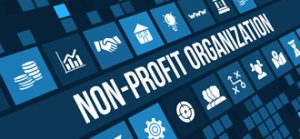Nonprofit Finance Funds and other funding for nonprofits can help nonprofits with a myriad of nonprofit financing options. Whether you are looking to grow your nonprofit organization, or even out cash flow, there are many financing options available. By combining your fundraising efforts to raise money with the tools of a nonprofit line of credit, a nonprofit business loan, government grants, and more, you can make life a little easier.
business loan, government grants, and more, you can make life a little easier.
Gone are the days of asking board members for an emergency loan to provide help with working capital due to payroll coming due or an unexpected bill that must be paid. You do have options.
Do you know what kinds of nonprofit finance funds options are available to you? And, more importantly, what the pros and cons are for each? Let’s spend some time going over them.
In this article, we’ll explore:
- Financing Solutions Nonprofit Line of Credit Product
- Nonprofit Financing From Commercial Banks & Credit Unions
- Nonprofit Finance Funds: The Pros & Cons
- Online lenders like Ondeck, Kabbage, Financing Solutions
- Nonprofit Loan Funds or Nonprofit Finance Funds (NFF)
- Are SBA Nonprofit loans available?
- Government Grants and Foundations are a great option
- Fundraising events are still important
Nonprofit Financing from Financing Solutions
Financing Solutions is a leader in approving smaller nonprofit organizations quickly and conveniently with its Nonprofit Line of Credit. Financing Solutions’ can set up a Nonprofit Line of Credit in as quickly as 48-72 hours. The line of credit requires no collateral or personal guarantees. To qualify, your nonprofit only needs to be doing $200,000 in yearly revenue.
The online application can be filled out in less the 2-minutes and you will receive a no-obligation written offer letter emailed within hours. A knowledgeable Relationship Manager will be happy to answer any questions you have.
The Financing Solutions Line of Credit costs nothing to set up and nothing when not being used, making it an excellent backup plan. The line of credit is inexpensive when used and can be paid back in full at any time. It is a very flexible source of nonprofit financing and you only have to use it when you need it. It’s a great cash backup plan to help address short-term expenses like making payroll or paying an unexpected bill.
Nonprofit Financing From Commercial Banks & Credit Unions
Commercial banks, credit unions, and other funders typically do not provide nonprofit financing or term loans. They may offer a loan or line of credit to a large nonprofit occasionally but in general, banks shy away from small nonprofit financing.
If you have someone at your nonprofit who is willing to give a personal guarantee and you have collateral (i.e. real estate) then a bank or credit union might be a good option. Banks  are typically the cheapest form of borrowing but that does depend on how much you plan to use the credit line.
are typically the cheapest form of borrowing but that does depend on how much you plan to use the credit line.
Keep in mind that if you need money now to solve an immediate cash flow issue, a commercial bank or credit union will take months to get in place and Financing Solutions might be a better option.
Banks and credit unions view loans for non profit organizations as risky, since nonprofits don’t generate a profit. Since a nonprofit’s goal is to not have a lot of profit, you can see why many nonprofits won’t qualify for a bank line of credit or a term loan.
If you have already talked to a bank or your credit union you might have discovered already that being approved for a loan might be challenging.
Different Kinds of Nonprofit Lenders: The Pros & Cons
CDFI’s (Community Development Financial Institutions)
CDFI’s are institutions that have different types of loans for nonprofit organizations in economically disadvantaged areas of the United States. They typically work with nonprofits serving lower-income neighborhoods in major cities like New York, or towns in very rural areas of the country that may have limited access to education or healthcare. Pros: They can provide startup loans and microloans to non profits. They also provide SBA loans to nonprofits.
The Cons: Startup loans are only for startups and microloans are just that: MICRO. Both loans are very short term in length, small in approval amount, and still can take months to get set up.
SBA loans are a great resource for nonprofits when you can get approved for them. Since SBA loans require you to provide a lot of documentation and can take months to get, they are only a great option if you are not in a hurry.
Online lenders like Ondeck, Kabbage, Financing Solutions
There are online lenders that might help small businesses but very few of them help nonprofits. Pros: Financing Solutions, a leading provider of business loans for nonprofits in the form of a 501c3/not-for-profit line of credit, is one of the few online lenders that specifically provides lines of credit to nonprofits and the credit line product is easy to get in place.
Cons: Most online lenders don’t work with nonprofits.
Nonprofit Loan Funds or Nonprofit Finance Funds (NFF)
Pros: Nonprofit Finance Funds offer loans to nonprofits, and are often nonprofits themselves. They do charge interest and can be a CDFI as well.
Cons: Like CDFI ‘s, they’re going to require collateral and a personal guarantee. Plus they don’t offer lines of credit but term loans. Their application might ask for in-depth information on your donor base, as well as a history of your organization’s growth. Also, they only generally help nonprofits that are large and who want nonprofit loans starting at $300,000. Smaller nonprofits won’t be able to benefit from any of their offerings.
Are SBA Nonprofit loans available?
The SBA (Small Business Administration) typically serves small business owners with business financing at low-interest rates. They provide a few financing options including disaster loans for the COVID-19 crisis. The SBA does have some loans for nonprofits. However, the SBA will only provide a very limited, small amount of money.
Approvals are based on the services and people you serve so the best thing to do is to visit their website and do some investigative work. During the COVID-19 (coronavirus) pandemic, there were more United States government funding programs available but prior to that, the SBA didn’t really provide nonprofit financing very often.
Note that the SBA process is not a quick one and, since the SBA is geared toward small business loans, they are sometimes not the best match for nonprofit needs.
Government Grants and Foundations are a great option
Applying for a government grant is a great option for the nonprofit sector and many smaller tax-exempt nonprofits struggle with this because of the time and energy it takes to apply. The business model for getting funding from government grants usually requires someone dedicated to applying.
What you should know is that Nonprofit foundations are required to donate at least 5% of their endowment yearly so applying for grants might pay off in your fundraising efforts.
Fundraising events are still important
Many Executive Directors of nonprofits rely on fundraisers to boost their revenue. But, it takes money to make money. Fundraising events entail a lot of hard work, and in many cases, a lot of working capital upfront. They can really put a dent in your operating budget until you recoup what you spent once tickets are sold or once you receive donations made on the event day itself.
Fundraisers can take weeks or months to plan. Even looking at virtual fundraising events, there will still be advertising campaign costs via different social media networks and there’s still lag time between planning a great fundraising campaign and launching one. Having a line of credit in place is a great way to relieve the initial financial stress that any associated costs might have on your organization.
Conclusion
There are various sources of nonprofit financing and all have their pros and cons. Non-profits have a variety of unique circumstances that might create difficulties in meeting short-term obligations so a line of credit, term loan, or other funding options might be worth applying for. Many financing options for nonprofits can take months to get in place as well as personal guarantees and collateral, so you will need to get started.




